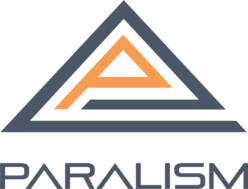Paralism, with parallel blockchain technology as its core, aims to break through the scalability limitations of traditional blockchains. It does not confine its development to specific businesses, scenarios, or roles. Following the principle of fully unleashing the potential of parallel blockchains and establishing a digital economy platform supported by parallel blockchain technology, Paralism plans its future development from three dimensions:
Part 1 Constructing Web3.0 Infrastructure Based on Parallel Blockchain Technology
From Web1.0 to Web3.0
In the early 1990s, the invention of the World Wide Web and the emergence of web browsers enabled interaction between people and web content, marking the era of Web1.0, where information interaction began. Subsequently, service provider platforms like Facebook, Amazon, and YouTube realized interpersonal connection which we called Web2.0.
Both Web1.0 and Web2.0 involve intermediaries—websites or platforms acting as bridges for information interaction between individuals or content, with all data storage being centralized.5
Then, the advent of blockchain solved the trust issue among unfamiliar nodes, enabling peer-to-peer transmission and potentially reshaping the internet to achieve ecological interconnection in Web3.0.
Existing blockchain technology fails to support a true Web3.0 infrastructure due to its inability to simultaneously meet scalability and decentralization requirements. To comprehensively support the Web3.0 ecosystem, Paralism introduces parallel chain architecture and the Buddy consensus algorithm, enabling blockchain to achieve high scalability without sacrificing decentralization, thus leading the world into the Web3.0 era.
High Scalability Supports the Web3.0 Application Ecosystem
In the early stage, Paralism will mainly support existing blockchain-related applications, businesses, and assets with stable and high performance. As the variety and volume of on-chain business on Paralism grow, it will gradually expand into a Web 3.0 application ecosystem that allows various types of applications, businesses, and assets to be onboarded, leveraging its outstanding dynamic sharding, unlimited scalability, and perfect cross-chain interaction capability.
Integrating Other Technologies to Serve Web3.0 Collaboratively
Blockchain, as a technology for consensus among unfamiliar nodes, offers new solutions for social division of labor, systemic governance, value dissemination, and production cooperation, thus believed to have the potential to reshape production relations. However, blockchain technology alone cannot form a complete ecological interconnection. Only by combining blockchain technology with technologies from other fields such as storage, AI, big data, and the IoT can we continuously improve and change the connection relationships between individuals, machines, individuals and machines, and various application ecosystems, thus becoming a true Web 3.0 infrastructure.
Part 2 Promoting the Protocol-Agnostic Digital Economy Platforms
Paralism solves the basic problem-scalability, of blockchain technology, but we still need considerable time to promote application development and the transformation of economic forms. Paralism will take the following measures to promote the development of Protocol-Agnostic digital economy platforms:
- Design core community incentive mechanisms based on fully decentralized parallel blockchain technology to promote platform development at different stages and jointly build the Paralism economic ecosystem;
- Develop application-layer auxiliary tools and templates to facilitate the development of decentralized applications, on-chain integration of real-world economies, and the operation of various on-chain business;
- Widely open APIs, deepen cooperation with “Layer 2” institutions, rapidly identify problems that need to be solved with blockchain and applications/businesses that can create value using blockchain technology, enrich on-chain businesses, facilitate interaction among ecosystems, and promote the development of Paralism ecosystem.
Part 3 Promoting Comprehensive Integration of the Web3.0 Ecosystem
On-Chain Assetization Promotes the Expression of Value On-Chain
The Appchain function of Paralism allows users to easily self-issue chains and customize consensus to achieve the digital expression of on-chain assets and the convenience of the on-boarding of various off-chain assets. It supports the issuance of both fungible tokens and NFTs (PRC-721 and PRC1155), meeting various application scenarios and significantly enriching on-chain assets.
Cross-Chain Transactions Promote the Interaction between Assets and Value Among Ecosystems
The parallel chain architecture of Paralism naturally supports cross-chain interaction. By issuing protocol chains, Paralism will connect assets and users from other public chain ecosystems, finally Paralism will create an Omnichain for Web3.0, enabling broader cooperation and integration among chains and ecosystems.
Decentralized Governance Promotes Interaction Among Individuals Across Ecosystems
Paralism’s underlying technology supports various DAOs (Decentralized Autonomous Organizations) to operate on-chain. Through DAO’s decentralized governance mechanism and built-in decentralized transaction pools, community members can participate in the decision-making and development of any project within the ecosystem. The open governance model of DAO also enables better collaboration among Web3 projects and applications, driving the development of the entire ecosystem together.

